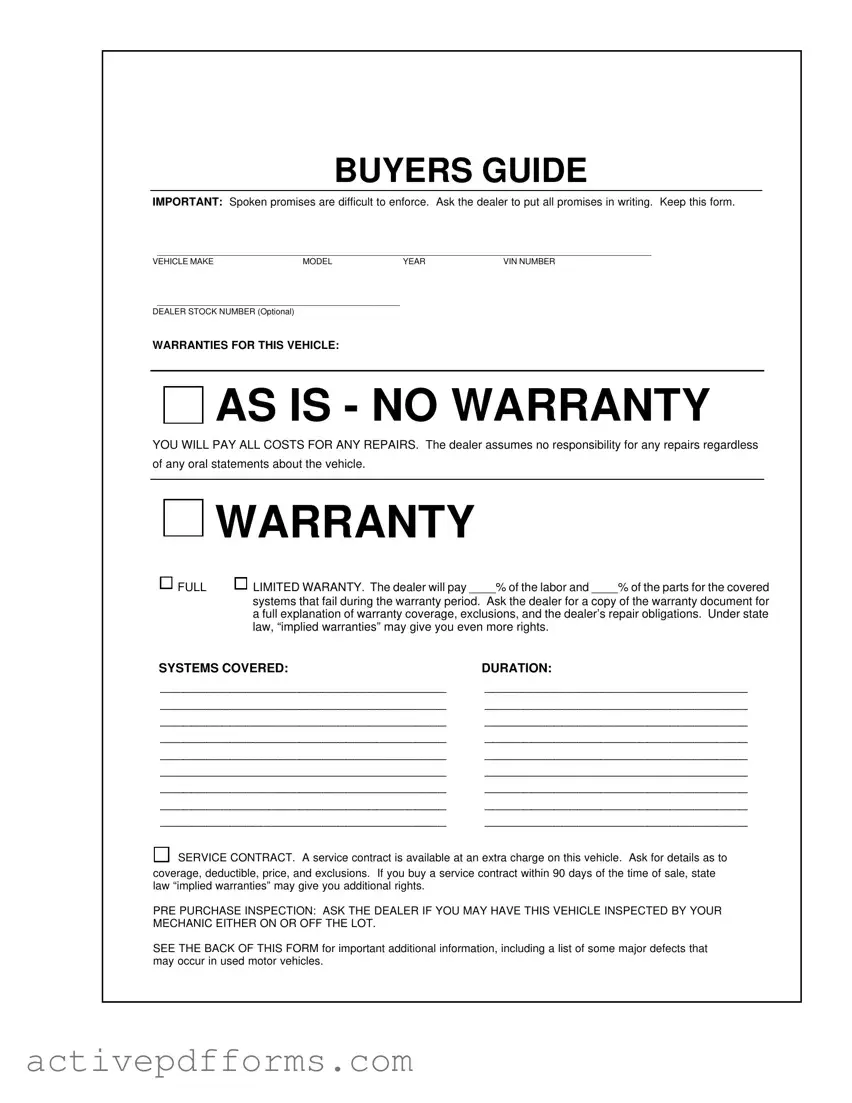In the process of purchasing a used vehicle, the Buyers Guide form serves as a critical document provided by dealers to inform potential buyers about the vehicle's warranty and condition. It underscores the importance of written promises by dealers, as verbal ones can be challenging to enforce. The form details the make, model, year, and VIN of the vehicle, along with optional dealer stock numbers. It clearly delineates the types of warranties applicable: "As Is - No Warranty," which places all repair costs on the buyer without dealer responsibility, and "Warranty Full/Limited Warranty," which covers certain percentages of labor and parts for specified systems within a warranty period. Additionally, the guide advises on potential service contracts for extra charge, the opportunity for pre-purchase inspections by a mechanic, and the inclusion of major defects that may occur in used vehicles. By law, this form is an integral part of the vehicle purchase contract, and its removal before purchase, excluding test-driving, violates federal regulations (16 C.F.R. 455). Thus, it emphasizes consumer rights and protection, highlighting state law "implied warranties" that offer further rights beyond the dealer's written promises. The guide's detailed list of major defects, such as issues with the frame, engine, transmission, and other vital components, serves to inform buyers about possible vehicle shortcomings, ensuring they make educated decisions in their transactions.



 WARRANTY
WARRANTY

 WARRANTY
WARRANTY